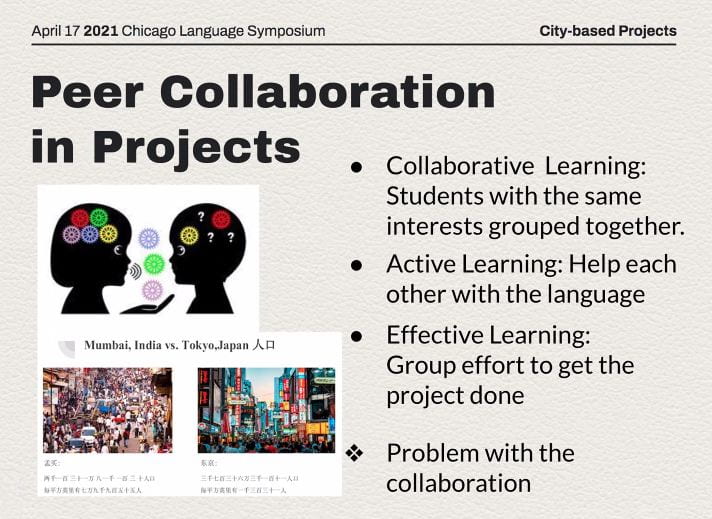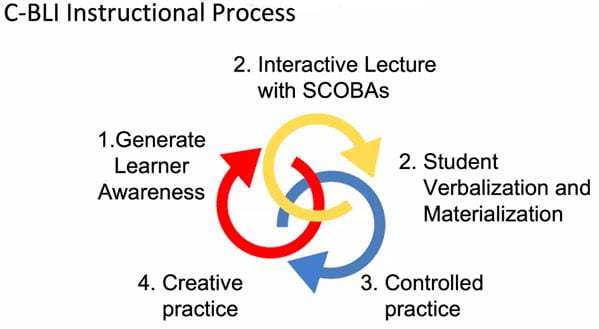Reflections on 2021 Chicago Language (Virtual) Symposium by Aida Görgülü
2021 Chicago Language (Virtual) Symposium was held on 17th of April, 2021, as a full day event at DePaul University. This symposium offers multiple professional development opportunities for the teachers every year. The event offered a chance for the participants to interact by getting into the depth of the principles of Concept-Based Language Instruction. This year, I had a chance to attend as a participant and there were many presenters from different countries. They presented their projects related to peer learning and its positive effects on learners.
Highlights from the symposium
The importance of collaboration in peer learning was highlighted in the presentations. To give an example, one of the instructor integrated art into the project and named it as city-based projects. Before Covid-19, students had a chance to visit the museums in their cities and by the help of peer learning and collaboration, they were able to create their presentations to each other. Now, they are planning to do these visits virtually if possible.
During the symposium, most teachers shared their challenges and drawbacks that they have experienced during online education. Connection problems affect the flow of the lessons, even if they have a fully-planned lessons, they encounter time management problems.
As a Keynote speaker, Amy Snyder Ohta from University of Washington, presented her project including Concept-Based Language Instruction while teaching a language. She showed one sample activity from her project related to teach Japanese language to foreign students. She mainly talked about the importance of peer learning in education. Since the symposium was presented on an online platform, Zoom, we had a chance to practice the activities in breakout rooms. It was a very fruitful experience to interact with other teachers from different countries virtually.
Absract of Amy Snyder Ohta’s presentation
Concept-Based Language Instruction (C-BLI), grounded in Vygotskian sociocultural theory, richly incorporates peer learning to help learners to internalize high quality linguistic and cultural content. Textbook rules, while easy to learn and remember, often don’t accurately convey how the L2 is really used. C-BLI works to fill this gap with high quality materials based on usagebased linguistics research; at the same time, C-BLI promotes learner agency in L2 creation, with the result that the L2 becomes more interesting, engaging, and expressive. Examples from different languages are provided to show how nuanced linguistic and sociolinguistic concepts can be materialized into accessible materials that include clear visuals, written charts, and interactive lecture. To help students to develop L2 proficiency, we need to help them to internalize L2 concepts. Since students can’t engage higher cognitive processes through a low-proficiency L2, C-BLI harnesses L1 to promote internalization of concepts. Then, plentiful L2 practice is needed to promote application of concepts and growth in L2 proficiency. C-BLI guides student internalization processes via social cognition–learner verbalizations with the self (monologue, writing) and one another (pair and group work), focusing on tasks where students’ problem solved, re-explained, and transformed concepts into their own words and visuals. Through verbalized and visualized concepts, students shift their understandings of how L2 operates, building a strong foundation for L2 practice and creation. Plentiful L2 practice thus builds on conceptual development in an approach that focuses on realizing concepts in L2 use, rather than rigidly focusing on accuracy.
Source:



Leave a Reply